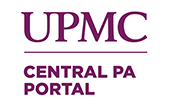The vascular specialists at UPMC in Central Pa. provide advanced treatment for unsightly or uncomfortable varicose and spider veins.
What are varicose and spider veins?
Varicose veins are enlarged veins that can be blue, red, or flesh-colored. They often look like cords and appear twisted and bulging. They can be swollen and raised above the surface of the skin. Varicose veins are often found on the thighs, backs of the calves, or the inside of the leg. During pregnancy, varicose veins can form around the vagina and buttocks.
Spider veins are like varicose veins but smaller. They also are closer to the surface of the skin than varicose veins. Often, they are red or blue. They can look like tree branches or spider webs with their short, jagged lines. They can be found on the legs and face and can cover either a very small or very large area of skin.
About 50 to 55 percent of women and 40 to 45 percent of men in the United States suffer from some type of vein problem. Varicose veins affect half of people 50 years and older.
What causes varicose veins and spider veins?
Varicose veins can be caused by weak or damaged valves in your veins. Your heart pumps blood filled with oxygen and nutrients to your whole body through your arteries. Veins then carry the blood from your body back to your heart.
Most varicose and spider veins appear in the legs due to the pressure of body weight, the force of gravity, and the task of carrying blood from the bottom of the body up to the heart. Compared with other veins in the body, leg veins have the toughest job of carrying blood back to the heart. They endure the most pressure. This pressure can be stronger than the one-way valves in the veins.
As your leg muscles squeeze, they push blood back to your heart from your lower body against the flow of gravity. Veins have valves that act as one-way flaps to prevent blood from flowing backward as it moves up your legs. If the valves become weak, blood can leak back into the veins and collect there. (This problem is called venous insufficiency.) When backed-up blood makes the veins bigger, they can become varicose.
Spider veins can be caused by the backup of blood. They can also be caused by hormone changes, exposure to the sun, and injuries.
What are the symptoms of varicose and spider veins?
Spider veins rarely are a serious health problem, but they can cause uncomfortable feelings in the legs. If there are symptoms from spider veins, most often they will be itching or burning. Less often, spider veins can be a sign of blood back-up deeper inside that you can see on your skin. If so, you could have the same symptoms you would have with varicose veins.
Varicose veins may not cause any problems, or they may cause aching pain, throbbing, and discomfort. In some cases, varicose veins can lead to more serious health problems. Varicose veins can often be seen on the skin. Some other common symptoms of varicose veins in the legs include:
- Aching pain that may get worse after sitting or standing for a long time
- Throbbing or cramping
- Heaviness
- Swelling
- A rash that's itchy or irritated
- Darkening of the skin (in severe cases)
- Restless legs
You should see a doctor about varicose veins if:
- The vein has become swollen, red, or very tender or warm to the touch
- There are sores or a rash on your leg or near your ankle
- The skin on your ankle and calf becomes thick and changes color
- One of the varicose veins begins to bleed
- Your leg symptoms are interfering with daily activities
- The appearance of your veins is causing you distress
If you're having pain, even if it's just a dull ache, don't hesitate to get help. Also, even if you don't need to see a doctor about your varicose veins, you should take steps to keep them from getting worse.
Who is at risk for varicose and spider veins?
Many factors increase your chances of developing varicose or spider veins, including:
- Increasing age. As you get older, the valves in your veins may weaken and not work as well.
- Medical history. Being born with weak vein valves increases your risk. Having family members with vein problems also increases your risk. About half of all people who have varicose veins have a family member who has them too.
- Hormonal changes. These occur during puberty, pregnancy, and menopause. Taking birth control pills and other medicines containing estrogen and progesterone also may contribute to the forming of varicose or spider veins.
- Pregnancy. During pregnancy, there is a huge increase in the amount of blood in the body. This can cause veins to enlarge. The growing uterus also puts pressure on the veins. Varicose veins usually improve within three months after delivery. More varicose veins and spider veins usually appear with each additional pregnancy.
- Obesity. Being overweight or obese can put extra pressure on your veins. This can lead to varicose veins.
- Lack of movement. Sitting or standing for a long time may force your veins to work harder to pump blood to your heart. This may be a bigger problem if you sit with your legs bent or crossed.
- Sun exposure. This can cause spider veins on the cheeks or nose of a fair-skinned person.
How can I prevent varicose and spider veins?
You may not be able to control some risk factors for varicose and spider veins, such as aging, hormonal changes, and personal or family history. However, you may be able to reduce your risk of developing varicose and spider veins by getting plenty of exercise and maintaining a healthy weight.
Need more information?
Call the UPMC in Central Pa. Vein Center at 717-920-4500 or UPMC Heart and Vascular Institute in Adams/York Counties at 717-849-5576 or 717-637-1738
Request Information.
Our Providers
Our Locations
UPMC Vein Center
2808 Old Post Road
Lower Level
Harrisburg, PA 17110
Phone: 717-920-4500
Fax: 717-920-4501
UPMC Heart and Vascular Institute
Located at Outpatient Services at UPMC Memorial
1703 Innovation Drive
Suite 4120
York, PA 17408
Heart and Vascular: 717-849-5576
Fax: 717-718-9972
UPMC Heart and Vascular Institute
Located at Medical Office Building
310 Stock Street
Suite 3
Hanover, PA 17331
Phone: 717-637-1738
Fax: 717-646-7430
UPMC Heart and Vascular Institute
Part of UPMC Heart and Vascular Institute
1600 6th Avenue
Suite 105
York, PA 17403
Phone: 717-849-5576
Fax: 717-718-9972


















